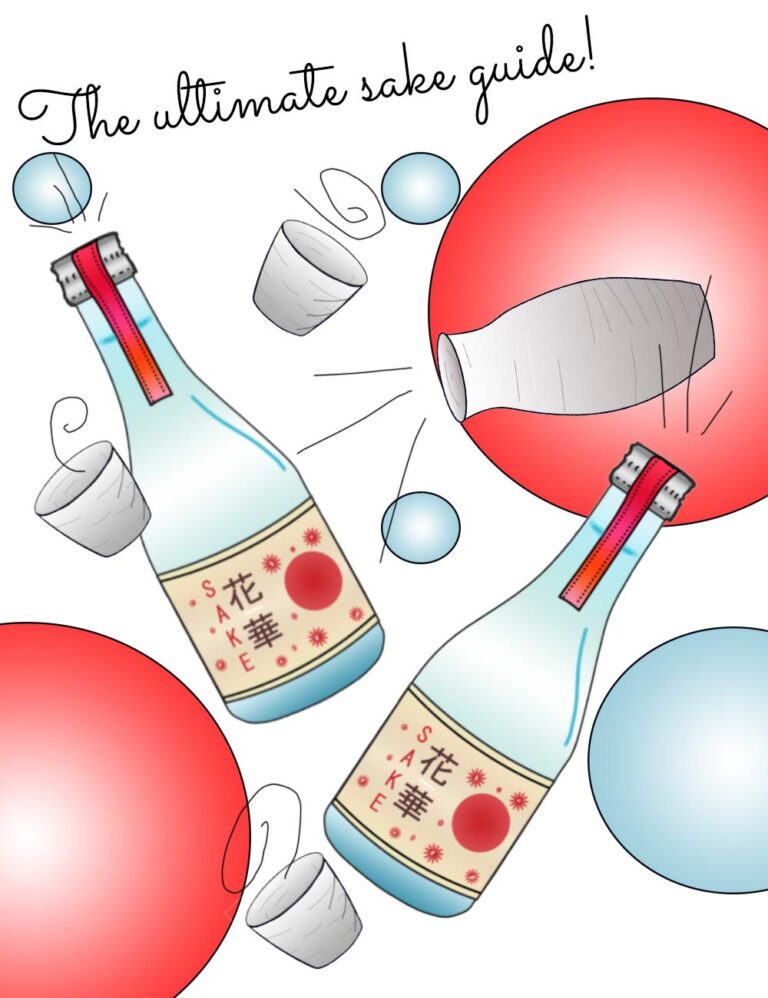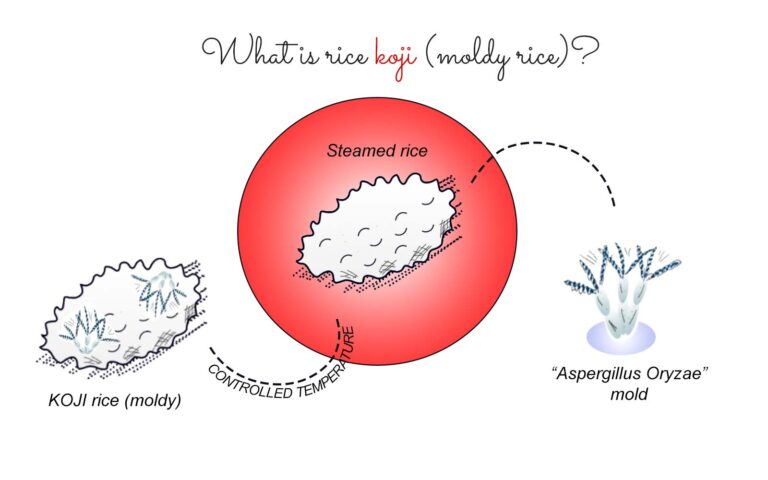Hello, my little samurai (or Tom Cruise) loving rose petals! Today we are going on a transcendental trip to Japan, with rice fields, water and alcohol of course (no one ever doubt that), because today it’s time for our ultimate, quick and easy sake guide! What is sake really? If you ever wondered what the heck is in those little sake glasses, and why is everything so cute around sake? Well, now you’ll find out!
What is sake?
First of all, in Japan, sake isn’t called “sake” but “nihonshu” and it’s a deep part of culture! The term “sake” (which we often use) represents any alcoholic beverage, that’s why my little rose petals, sake isn’t sake, but “nihonshu”. Now what is sake? Sake is a Japanese alcoholic beverage made from fermented rice, but sake comes in many forms and variations. Mild, strong, sweet, dry and everything in between! Oooo no, a lot of tasting work in front of us, shall we?


How is sake made?
Sake isn’t really similar to wine, because it’s brewed, just like beer! For the sake brewing process four essential ingredients are needed. That is: high quality rice, water (not just any, but often natural spring water), yeast and something that’s called rice koji (we’ll get into koji afterwards, but for now just remember that it sounds somewhat cute, doesn’t it?).
What is rice polishing?
To make sake, we need to polish even our rice (but we’re really used to polishing things, from cars to nails, to doorknobs, whatever you like!). But why do we polish our rice? The answer lies in the structure of the rice grain. In the outer layers if the rice grain you’ll find fatty acids, proteins and vitamins, but in the inner layer lies the starch. Without the polishing process the fat-protein flavors would impact the sake flavor, in a negative way. That’s why most sake rice is polished in the sweet spot of 70-30 % of the initial rice grain. On top of that, special rice called “saka-mai” is used for sake making, just-so-you-know! Now polish away, my little rose petals!

What is rice koji?
Now let’s get back to our quick and easy sake guide but not without koji! But what is it? Koji is cooked rice which has been inoculated with a mold called “Aspergillus oryzae”. But why you ask yourself? Because the mold turns the not-so-easy-digestible rice starch into easy-yummy-sugars that are the best yeast food! On top of that, koji is present in a lot of Japanese foods like miso, soya sauce, mirin, rice vinegar, you name it … Koji is always there to help!
What rice is used for sake?
Now that we know the basics, let’s jump to the expert’s section! For sake (as with beer hop for example) it’s really important which rice to use. The rice used for sake production is mainly wider and stronger in shape and, as we learned, has less protein and fat than normal rice. Furthermore (for the more aspiring students here), there are around 80 rice varieties for sake. The most popular ones are yamadanishiki, gohyakumangoku, miyamanishiki and omachi. Arigato!

How many sake are there?
Sake can be classified either by alcohol, color, sweetness or aging. Referring to the alcohol content sake is named either “seishu” or “shochu”. Seishu sake has alcohol content not over 15 %, while shochu it the hit-me-up sake type with alcohol levels exceeding 15 % alcohol. Also, in restaurants you can find the “futsushu” sake which is like the two-buck-chuck made of the cheapest rice and served as “table-sake”.
The color of sake
If you look at the color of sake, it can be clear as water, yellowish or deep golden yellow colored, with examples that can even do a brown color, which depends on the aging method of the sake. Most sake is clear colored but you can find golden or brown aged examples. Which brings us to aging.
Sake aging
Sake is mainly aged for a little time, mostly for 6 months before it’s sold. Aged sake is called “koshu”. It’s mainly tank aged for three or more years. In this period the sake changes colors and flavors and goes from clear colored to gold brown. However, today the most popular sake is mostly consumed young and colorless, but aged sake was very cool in the not-so-near-past!

Sake aroma and flavor
Sake aroma and flavor depends on a lot of factors and is therefore very similar to wine! We’ll discus this in another sake guide very detailed, but for now let’s say it like this … Younger sake has mostly very fresh and fruity aromas like apple, banana and other fruits. The taste depends on the sake type and can be sweet or dry, and anything in-between!
How to serve sake?
What would our sake guide be without a serving suggestion? Sake can be served chilled, at room temperature, hot or warm, mostly depending on the type of sake. When pouring sake do it with both hands, and when drinking do it sip by sip from small cups called “guinomi” or “choko”. First serve all your guests, and when everyone has full cups say cheers or “kanpai”! Sake is mostly consumed with some appetizers but can also be drank alone. In Japan sake is considered the “elixir of life” and the sake ritual is deep rooted in Japan’s culture.
That’s it my little rose petals, we hope you enjoyed our basic sake guide and learned a thing or two! If not, just enjoy your cup of sake not knowing what it is, but maybe knowing where to find your answers! Cheers to that, Kanpai!


